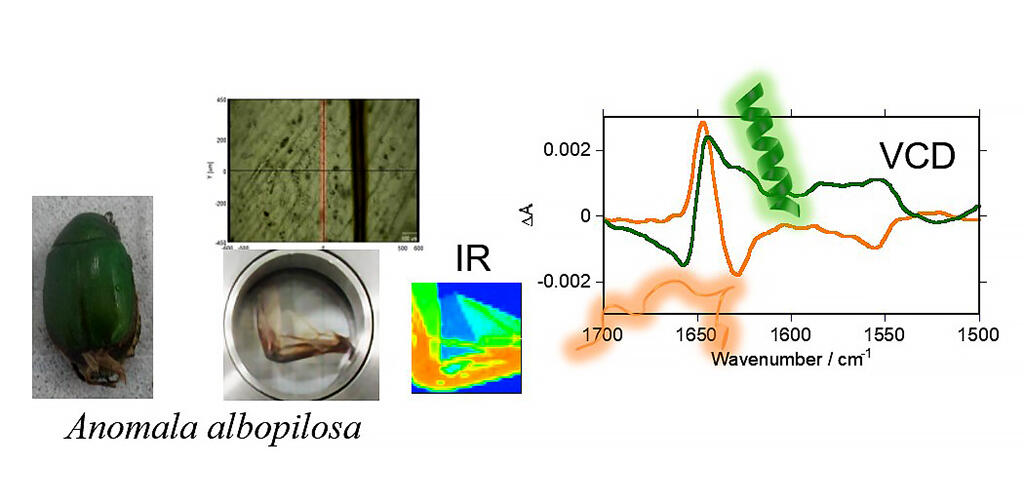Insect wings have diverse functions, making them representative models for device and material development through biomimetics. Although various functions including photonics, water-repelling, and antimicrobial properties have been investigated in a variety of ways, few studies to date have focused on chirality (asymmetry in right and left side structures, such as hands).
Professor Hisako Sato, Graduate School of Science and Engineering, Ehime University, in collaboration with Researcher Akihiko Yamagishi, Toho University; Jun Koshoubu, Director of JASCO; Associate Professor Jun Yoshida, Nihon University College of Humanities and Sciences; and Associate Professor Izuru Kawamura, Yokohama National University Graduate School of Engineering Science, used a proprietary multi-dimensional vibrational circular dichroism system with a quantum cascade laser to successfully detect the local structure of proteins in the lower wing of A. albopilosa. Their measurements revealed that the secondary protein structure in the membrane and veins of the lower wing was different. In future studies, the researchers aim to identify the asymmetric functions of the left and right wings of insects using this microscanning technique. Their findings were published in The Journal of Physical Chemistry Letters.

(Provided by Hisako Sato, Graduate School of Science and Engineering, Ehime University)
The researchers developed a multi-dimensional vibrational circular dichroism system that incorporates a quantum cascade laser and an automatic stage. They built the first system to scan inside a high-absorption sample at 100 µm spatial resolution.
Using this device, they structurally analyzed the proteins of each domain in the lower wing of A. albopilosa and found that the secondary protein structures of the wing membrane and wing vein are different. For example, the membrane has a right-handed α-helical structure while the wing vein is coiled randomly. Moreover, the positions where the α helix and β sheet are intermingled was also captured by examining the wing domains in detail.
Results like these have not previously been obtained using conventional infrared circular dichroic spectroscopy with a thermal light source. On top of this, the ability to measure the wing sample itself on the spot is expected to advance the understanding and application of the adaptations of insects to biological systems in the future.
This article has been translated by JST with permission from The Science News Ltd.(https://sci-news.co.jp/). Unauthorized reproduction of the article and photographs is prohibited.




